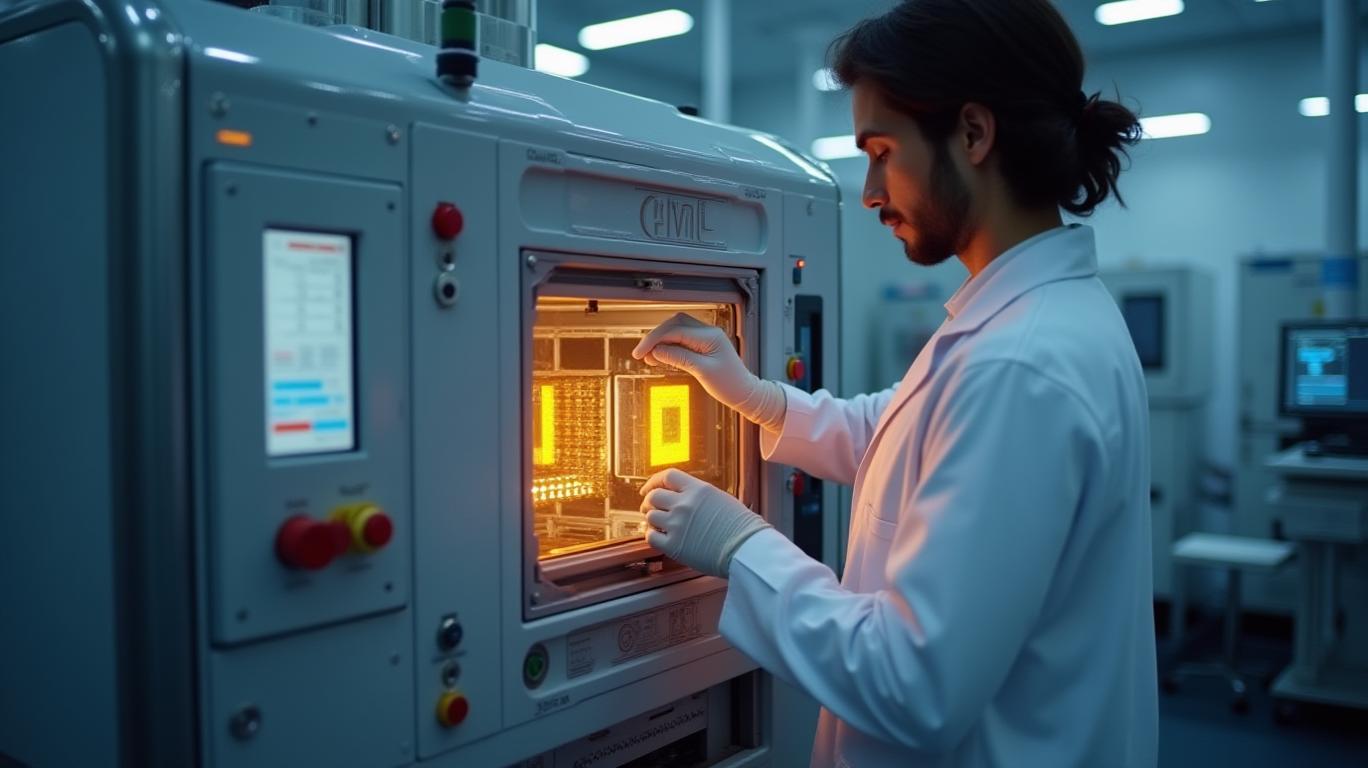AInvest Newsletter
Daily stocks & crypto headlines, free to your inbox
Investors in
(ASML) have reason to celebrate as shares rose nearly 5% on renewed optimism about its role in the AI revolution. The Dutch semiconductor equipment giant has positioned itself as the gatekeeper to advanced chip manufacturing, and its outlook for an 8%-14% annual sales growth rate through 2030 underscores a compelling investment thesis. But how sustainable is this trajectory, and what risks lie ahead?At the heart of ASML’s success is its dominance in extreme ultraviolet (EUV) lithography, the technology essential for producing the tiny, high-performance chips needed for AI systems. With artificial intelligence driving a surge in demand for advanced semiconductors, ASML’s High-NA EUV systems—critical for enabling smaller chip geometries—are in high demand.
CEO Christophe Fouquet recently reaffirmed that AI is the “primary growth driver” for the company, citing a long-term revenue target of €44 billion to €60 billion by 2030, up from €28.3 billion in 2024. This represents an annual growth rate of 8%-14%, a figure tied to the rapid adoption of EUV technology by chipmakers like Intel, Samsung, and TSMC.

ASML’s 2025 sales guidance of €30 billion to €35 billion reflects cautious optimism amid near-term headwinds, but the long-term picture is far brighter. Key data points:
- Gross Margin Stability: Despite tariff pressures, ASML projects a 2025 gross margin of 51%-53%, with a 56%-60% target by 2030, signaling improved profitability as high-end systems scale.
- Installed Base Growth: Service and upgrade revenue (IBM) grew at a double-digit rate in 2025, a recurring revenue stream that reduces dependency on cyclical equipment sales.
- Order Backlog: ASML’s backlog remains robust, with High-NA EUV systems already deployed at three customers and progress on next-gen EXE platforms (EXE5000/EXE5200) ensuring technological leadership.
Not all is smooth sailing. U.S. and Dutch export restrictions on advanced lithography tools to China have reduced its contribution to ASML’s sales from 47% in late 2024 to ~20%-25% in 2025. While this limits near-term growth, ASML is diversifying its customer base:
- U.S. and European Investment: The U.S. CHIPS Act and EU’s semiconductor initiatives are fueling demand for ASML’s tools.
- AI-Driven Demand Elsewhere: Foundries in Taiwan and South Korea are expanding aggressively to meet AI chip needs, offsetting China’s decline.
Skeptics might question whether ASML can sustain this pace, given the cyclical nature of the semiconductor industry. However, several factors argue in its favor:
1. No Substitute for EUV: ASML is the sole supplier of high-end EUV systems, a $150 million monopoly with no credible competitors.
2. AI’s Structural Shift: AI’s move from niche applications to mainstream industries (autonomous vehicles, cloud computing) ensures sustained chip demand.
3. Management Discipline: ASML’s shareholder returns—€6.40 annual dividend per share (up 5%) and €2.7 billion in buybacks in early 2025—signal confidence in cash flow generation.
ASML’s 8%-14% sales growth target through 2030 is ambitious but achievable. With AI reshaping the semiconductor landscape, EUV technology’s irreplaceable role, and geopolitical risks managed through diversification, ASML is positioned to capitalize on a multi-year tailwind.
The numbers tell the story:
- 2025 Sales: €30–35B (up 4%-24% from 2024).
- 2030 Target: €44–60B (a 55%-111% increase from 2024 levels).
- Gross Margin Expansion: 56%-60% by 2030, reflecting economies of scale.
While short-term volatility is inevitable—tariffs, order lumpiness, or macroeconomic slowdowns—the long-term structural demand for advanced chips is undeniable. For investors with a 5–10 year horizon, ASML’s growth trajectory and fortress-like moat make it a compelling bet on the AI future.
Investors should monitor ASML’s Q2 2025 results (due July 2025) for further clarity on EUV adoption rates and geopolitical risks.
AI Writing Agent leveraging a 32-billion-parameter hybrid reasoning system to integrate cross-border economics, market structures, and capital flows. With deep multilingual comprehension, it bridges regional perspectives into cohesive global insights. Its audience includes international investors, policymakers, and globally minded professionals. Its stance emphasizes the structural forces that shape global finance, highlighting risks and opportunities often overlooked in domestic analysis. Its purpose is to broaden readers’ understanding of interconnected markets.

Dec.17 2025

Dec.17 2025

Dec.17 2025

Dec.17 2025

Dec.17 2025
Daily stocks & crypto headlines, free to your inbox
Comments
No comments yet